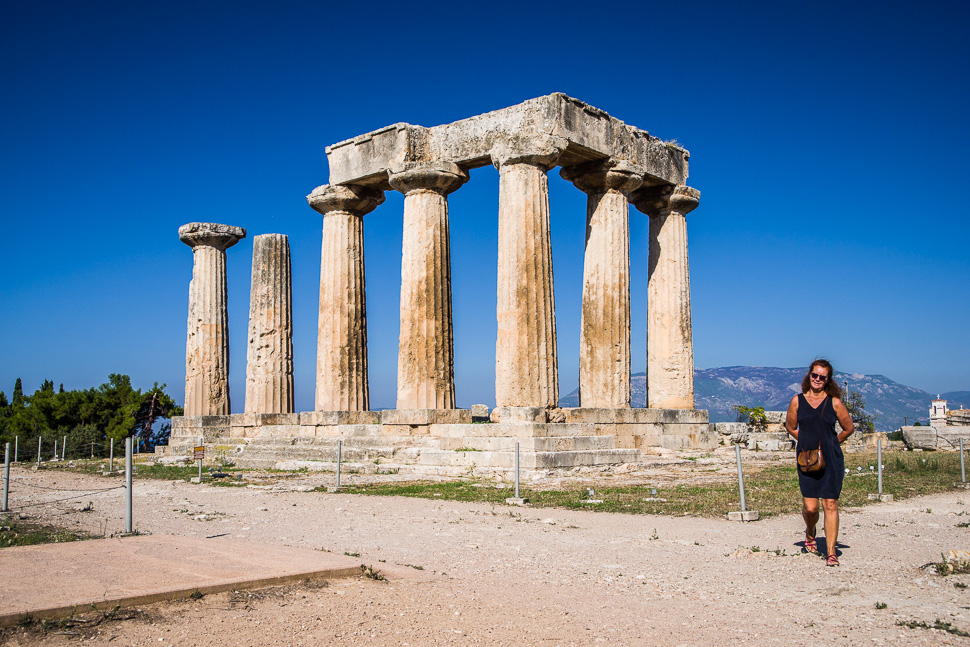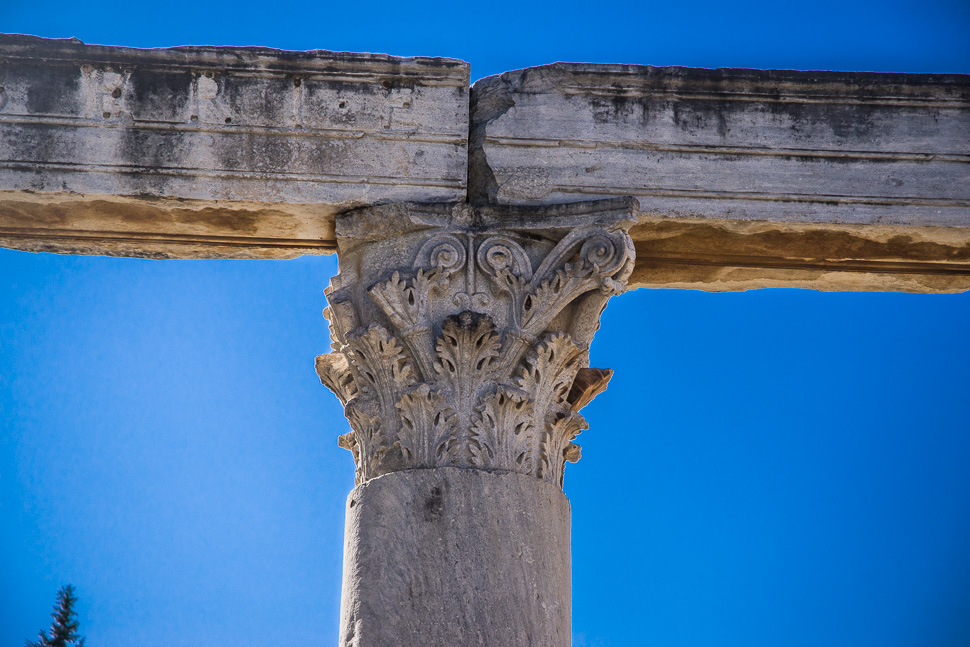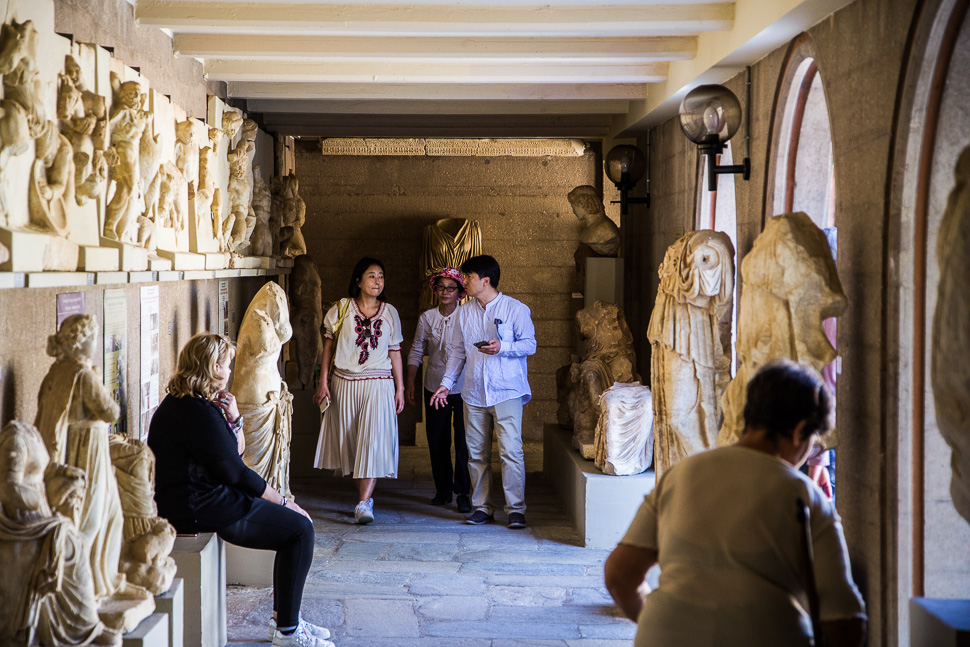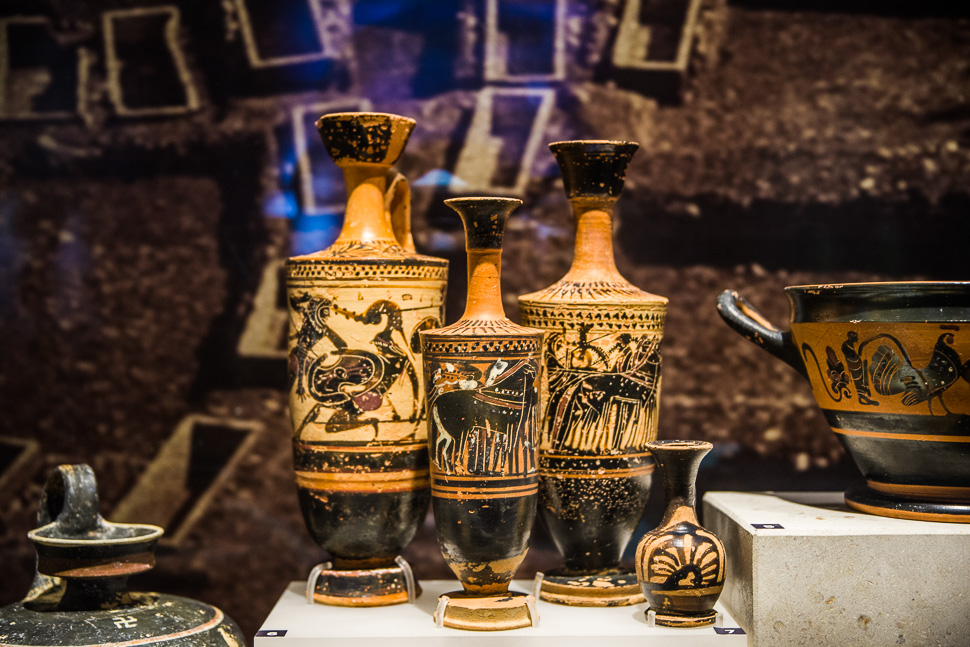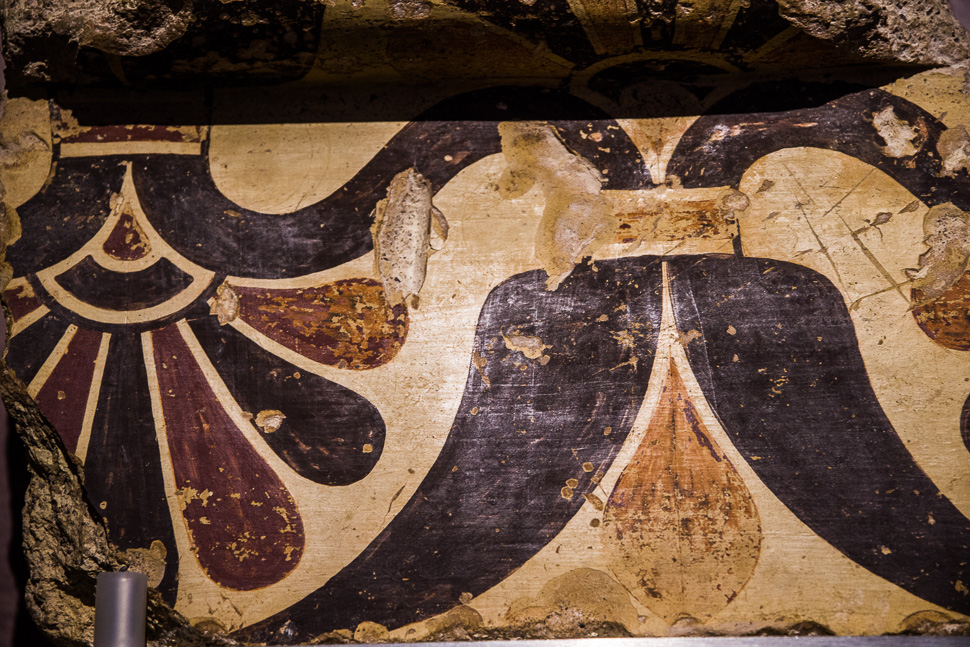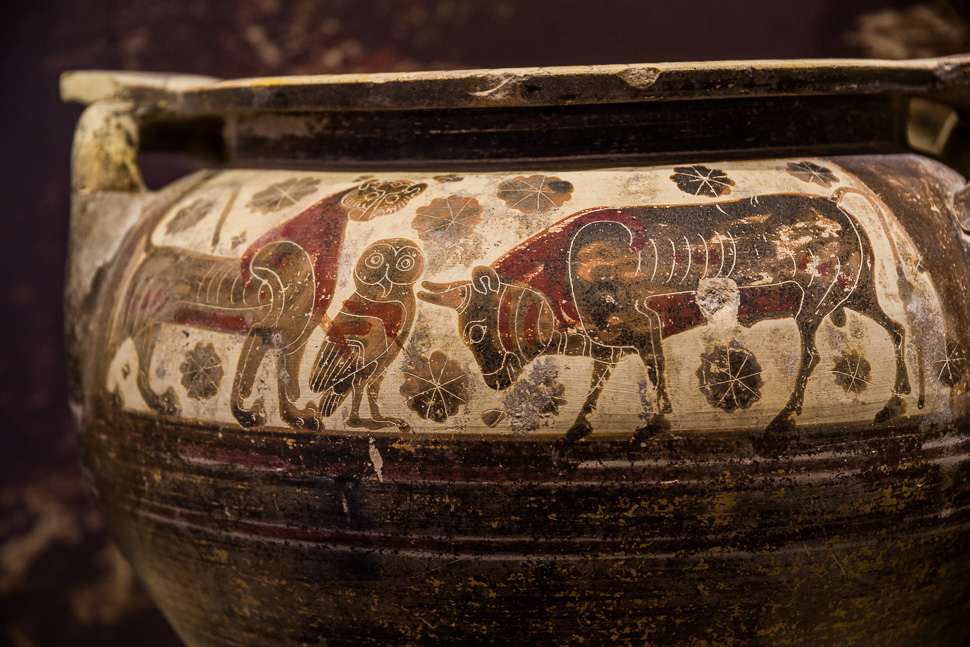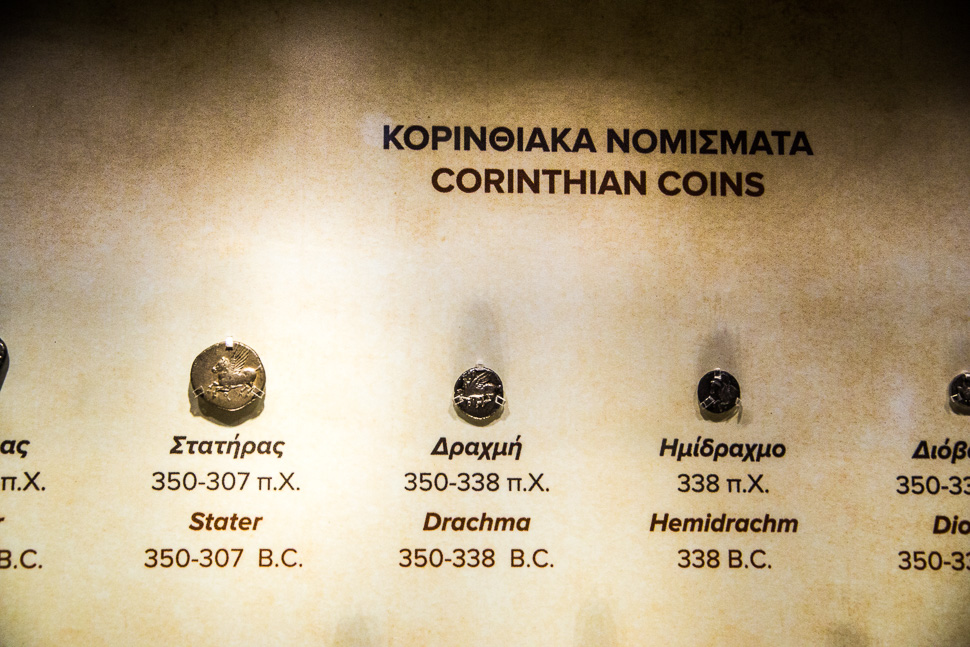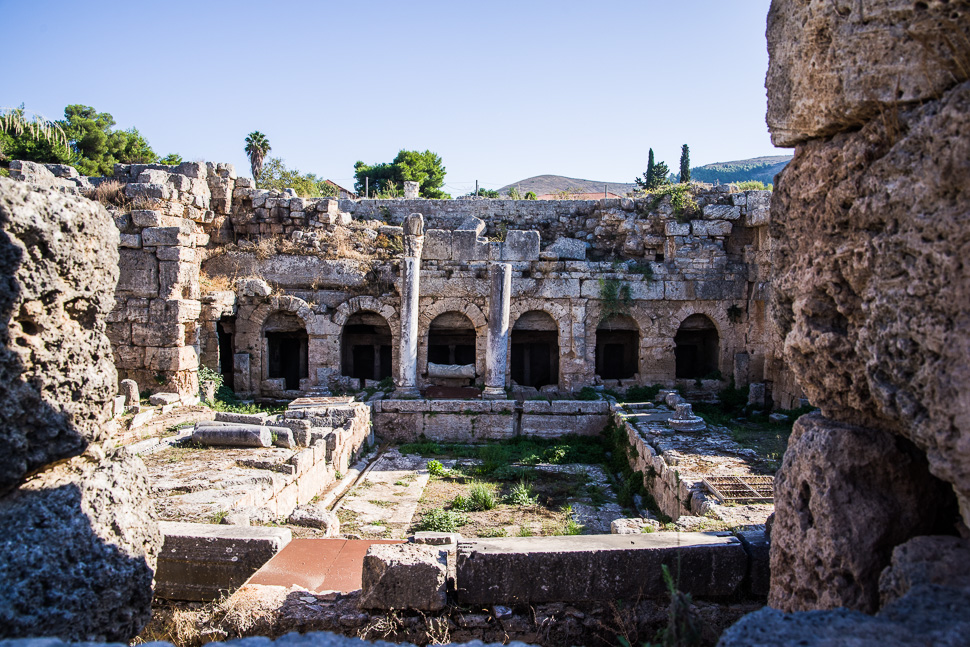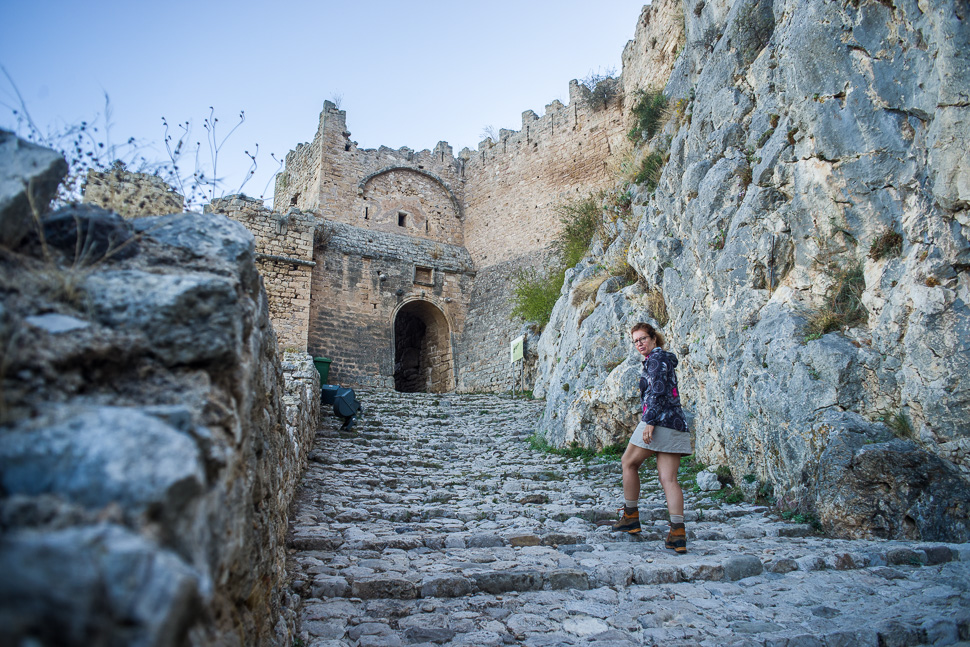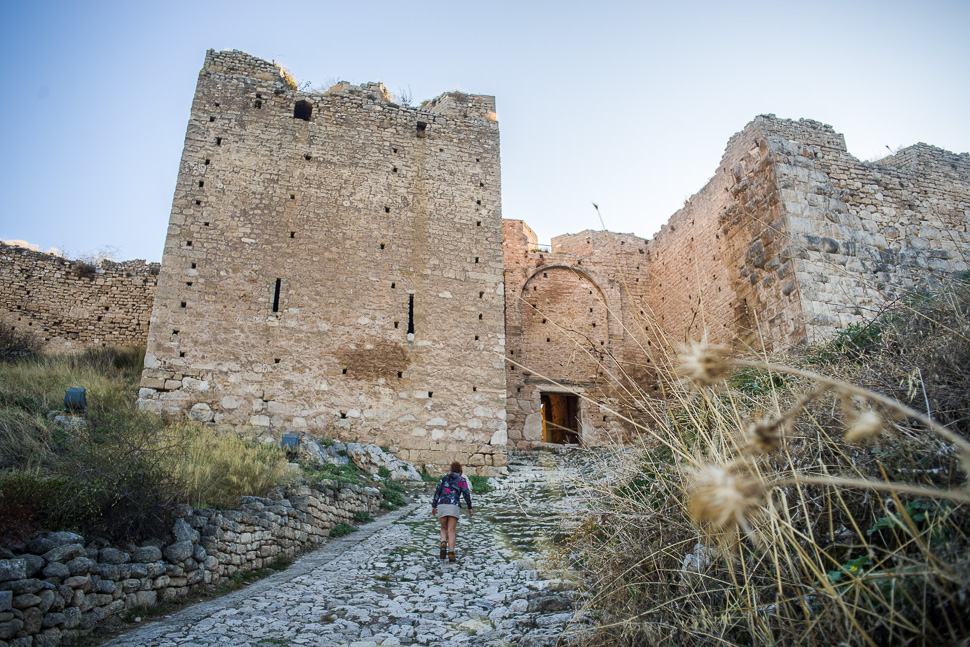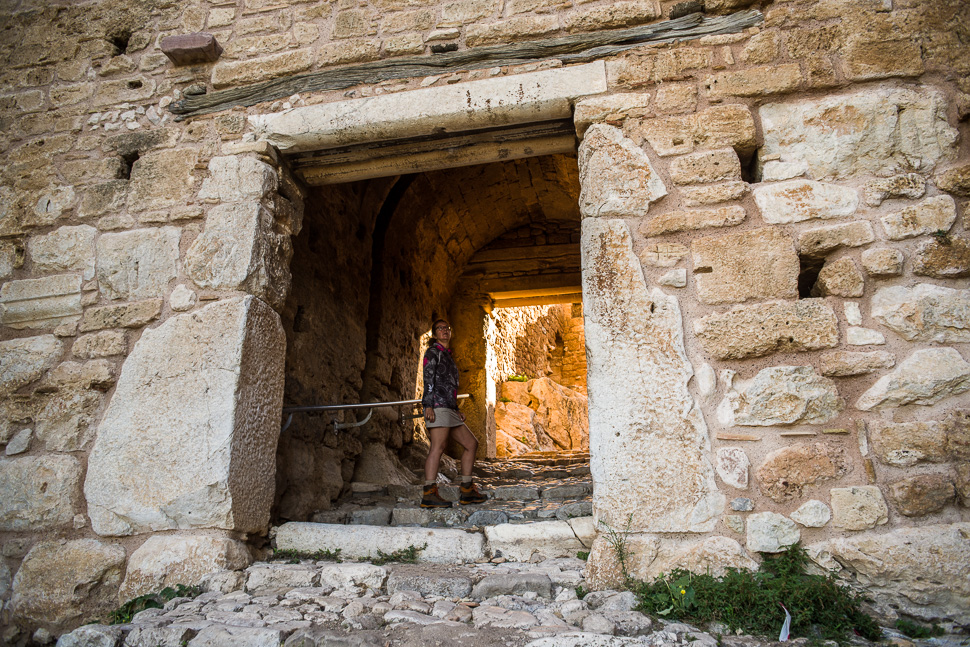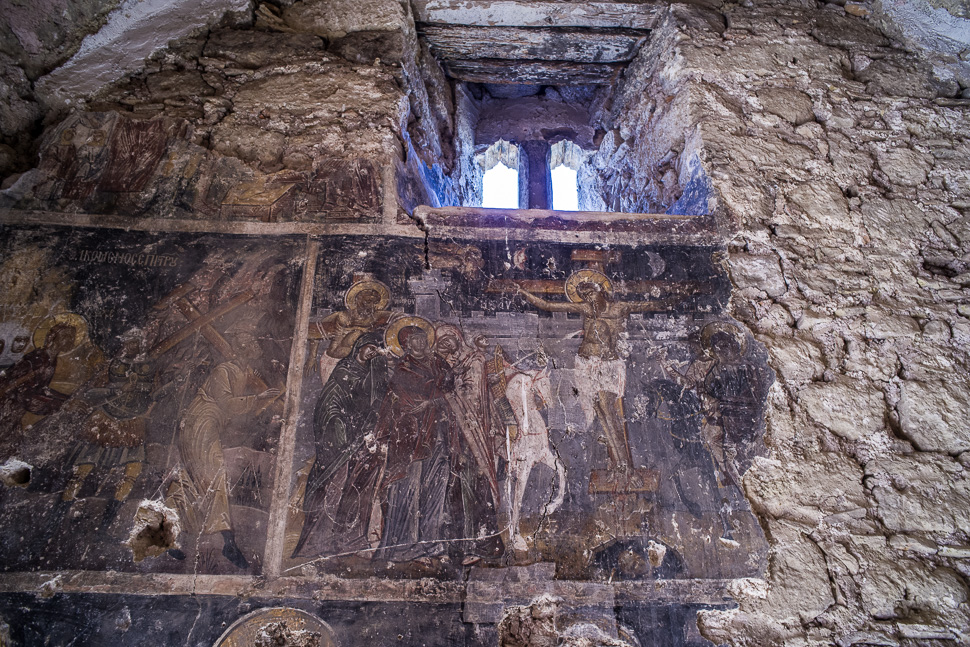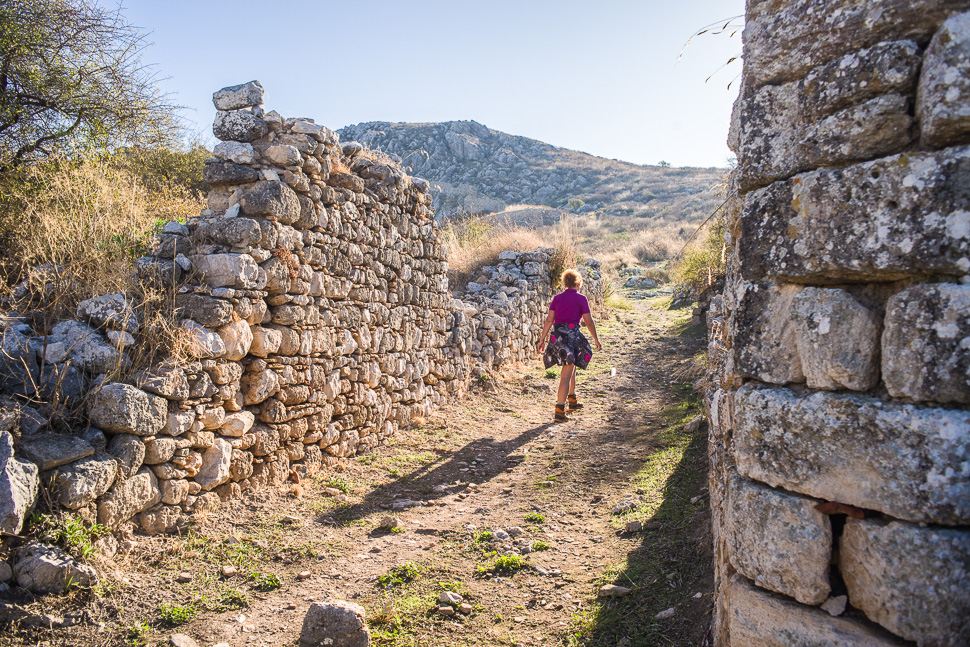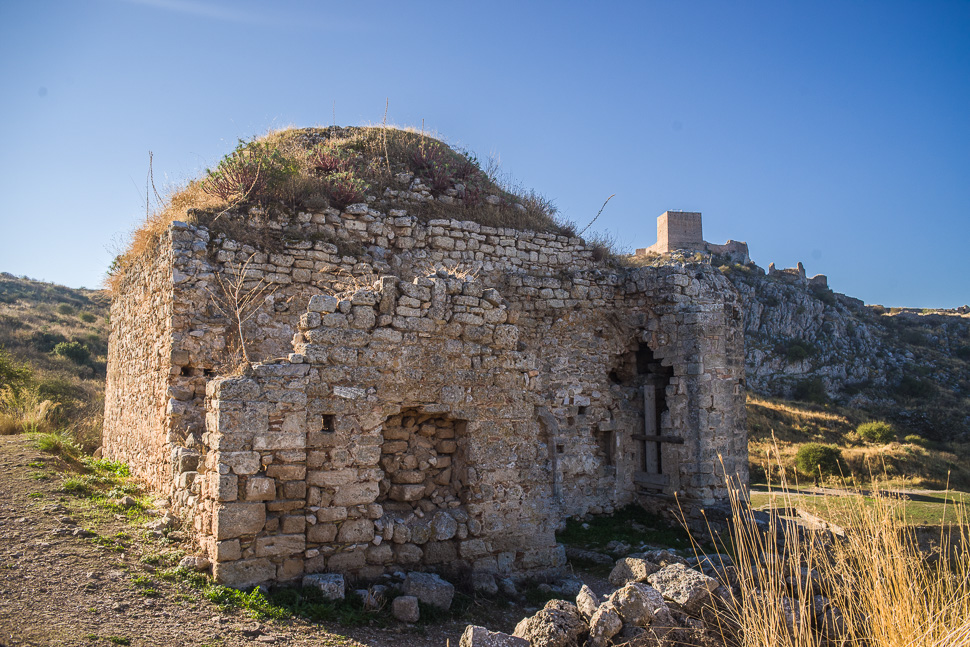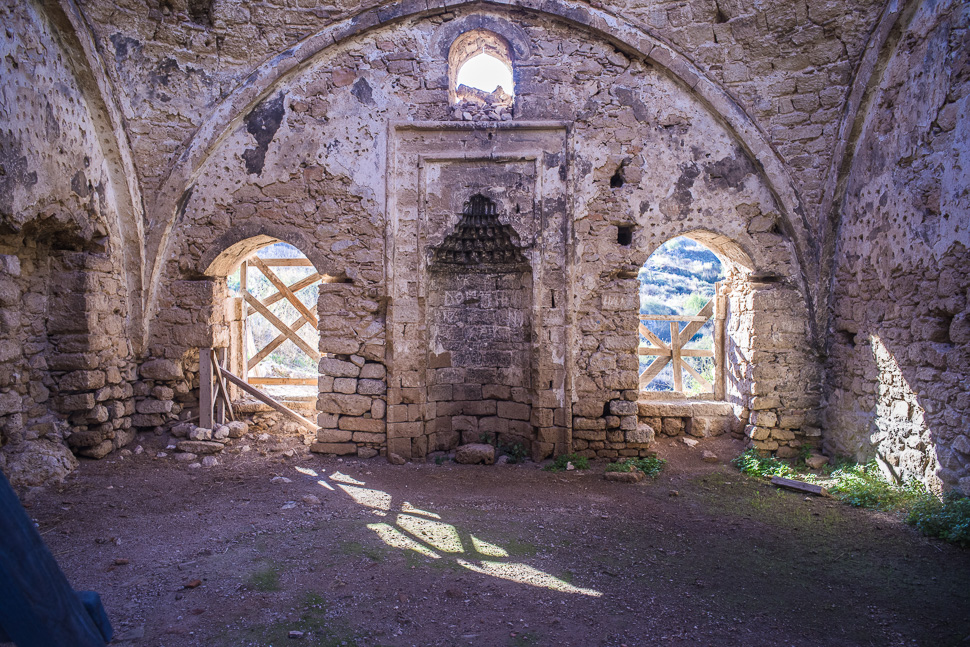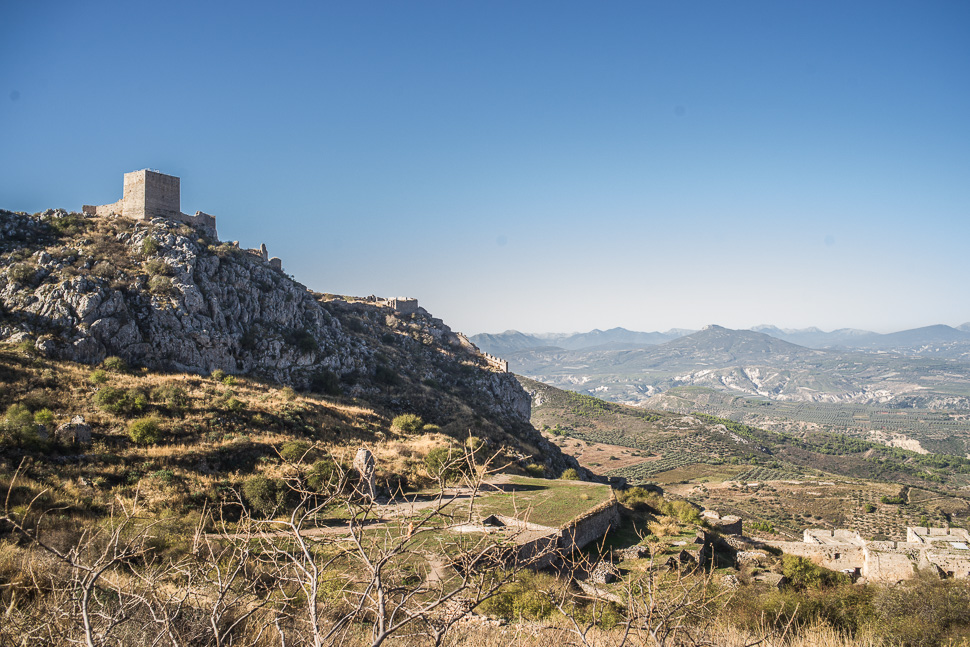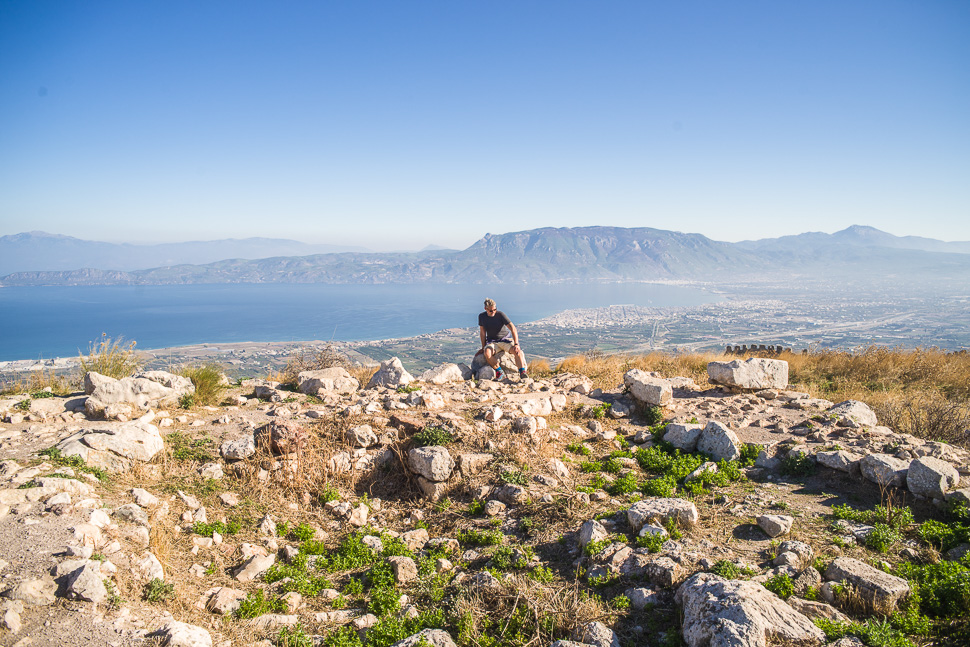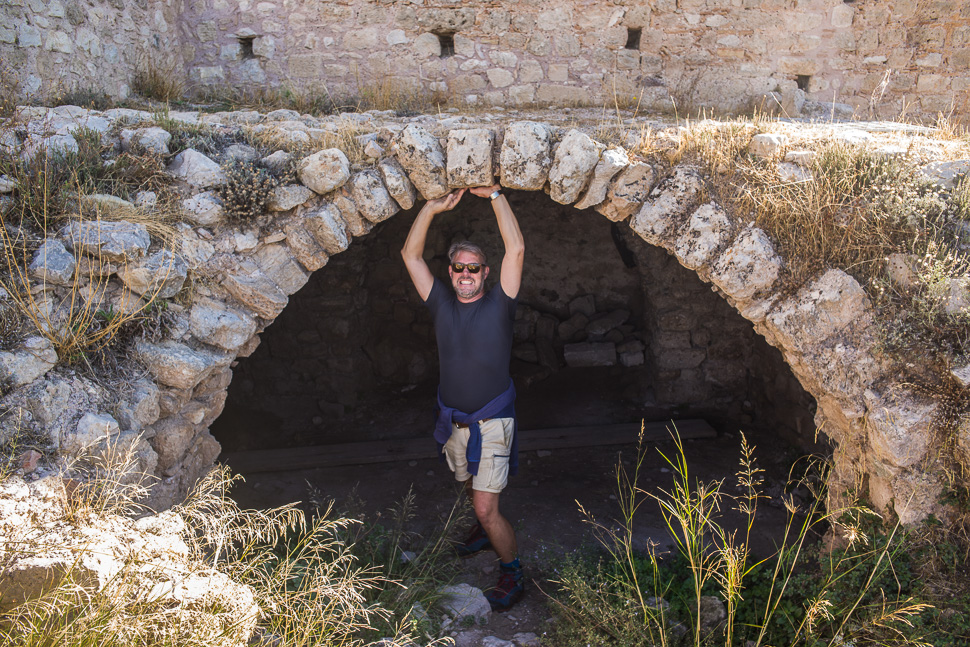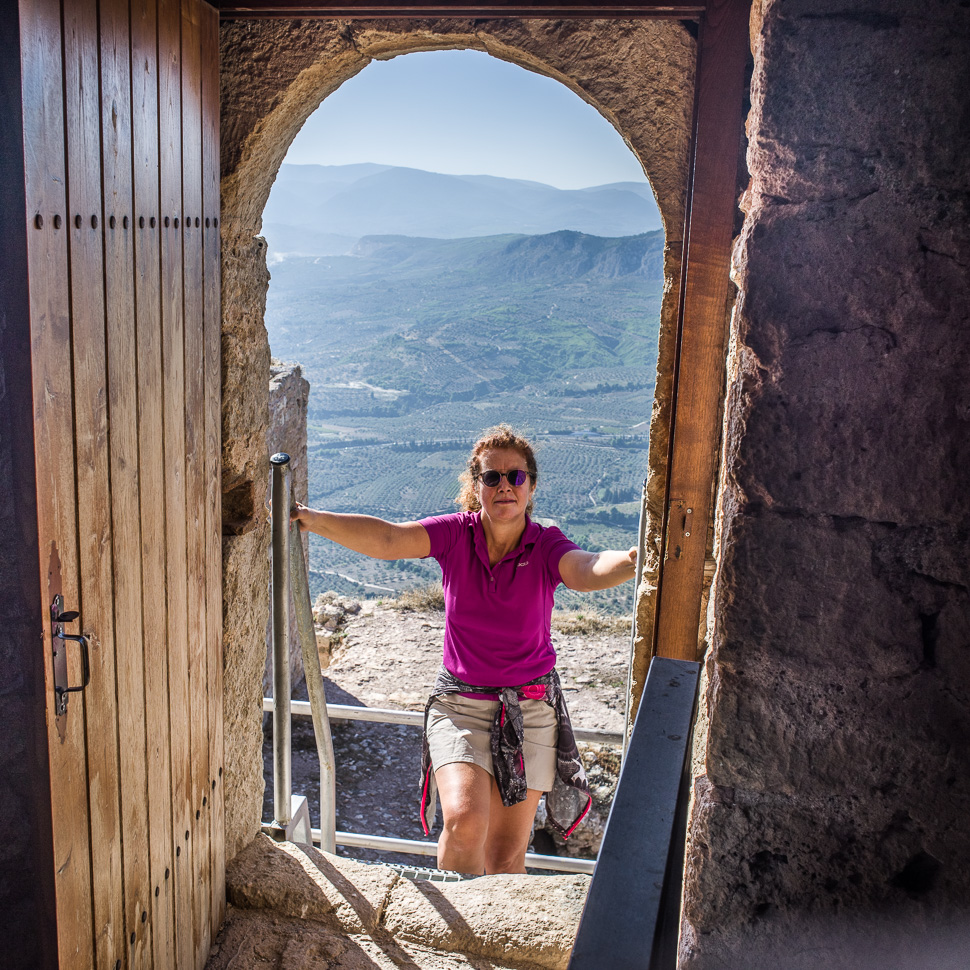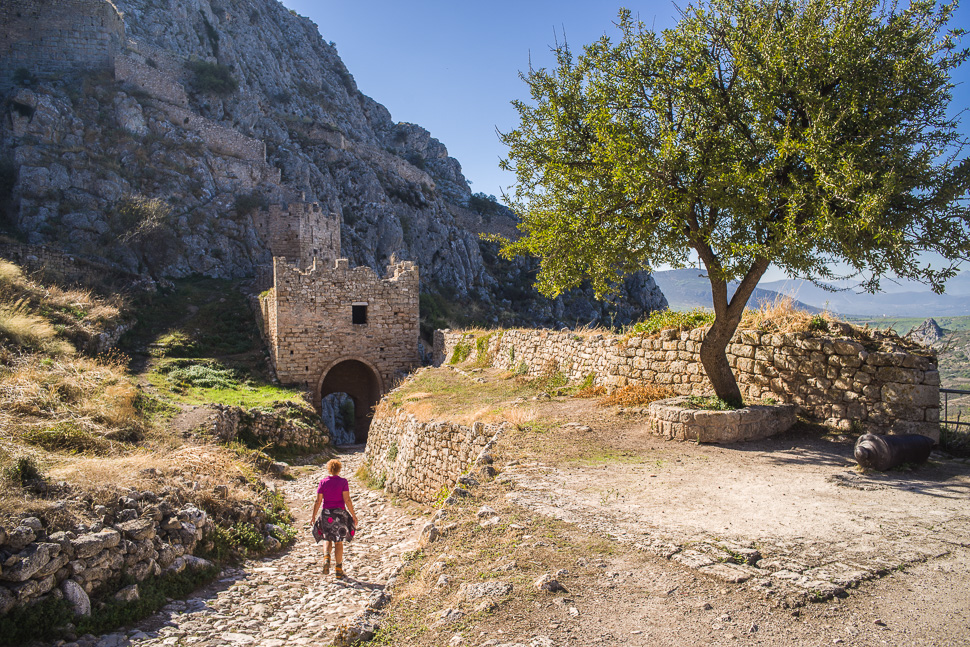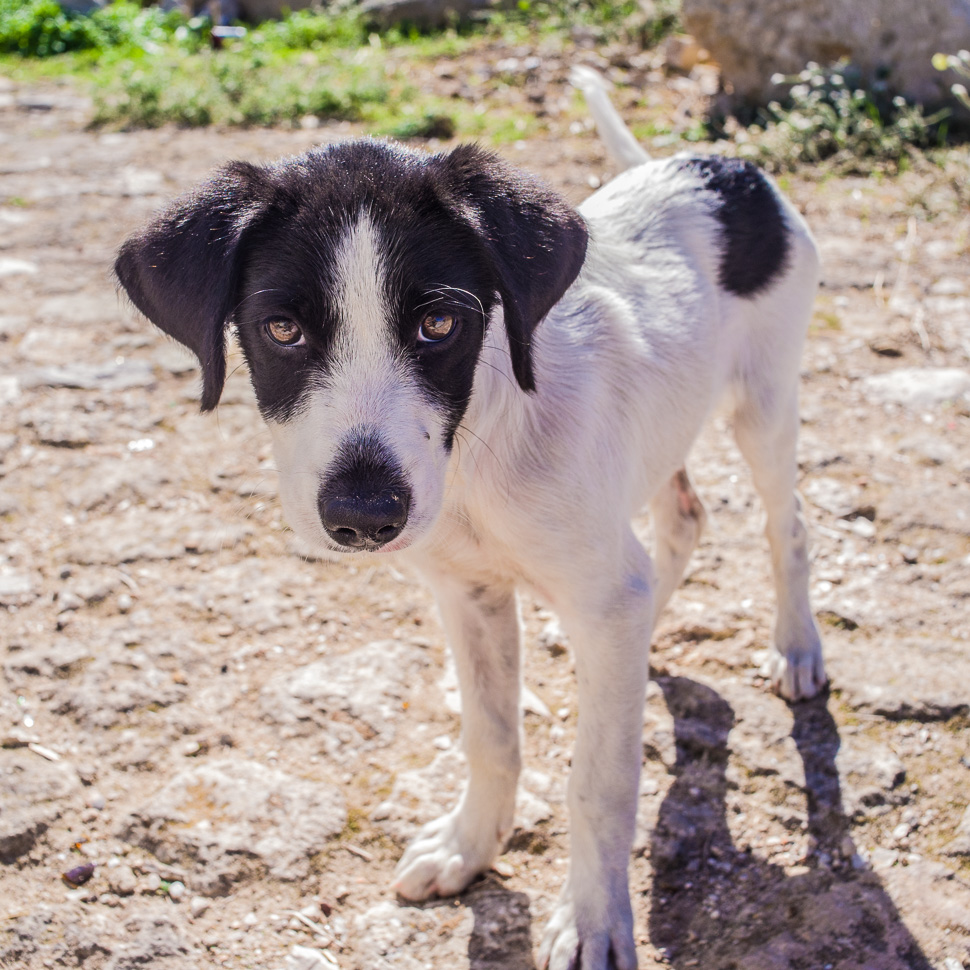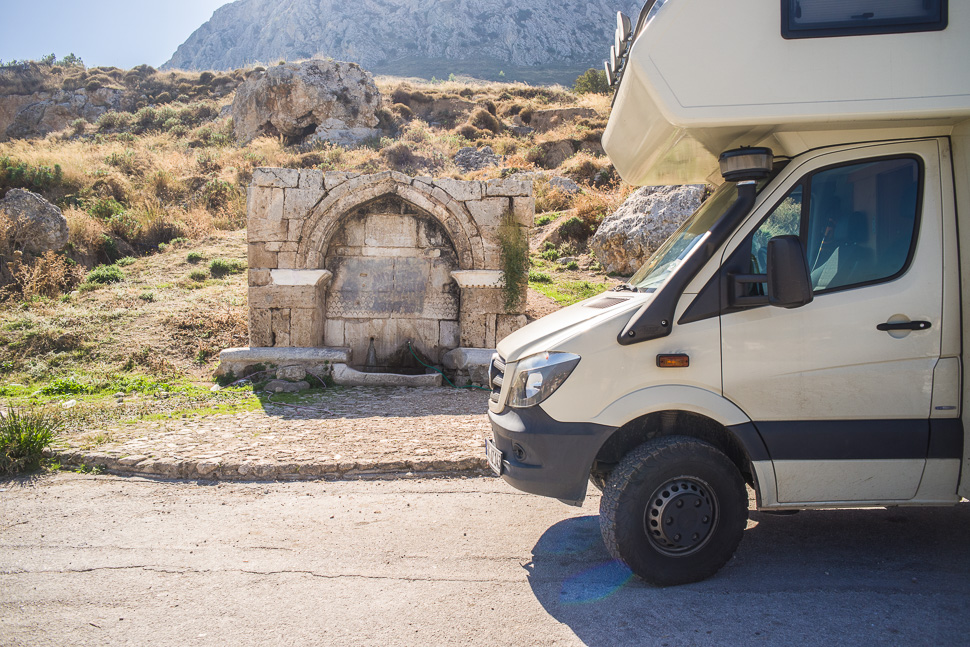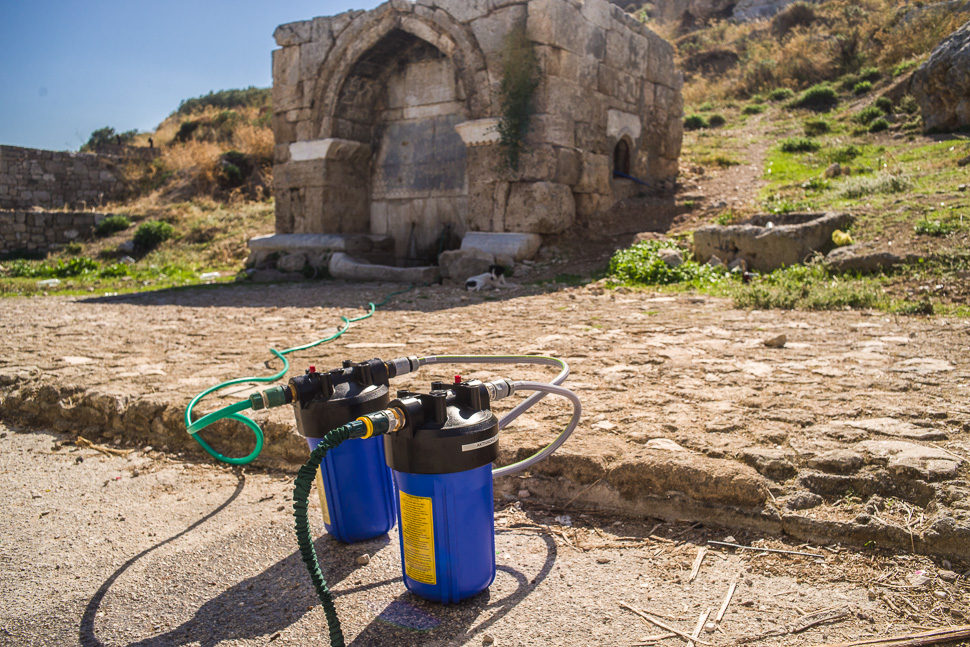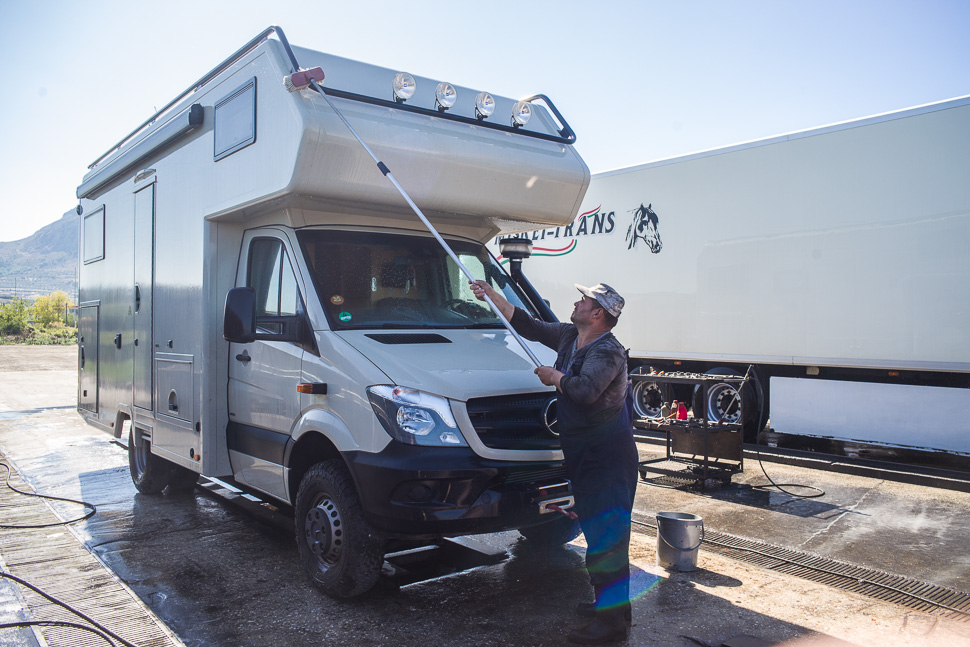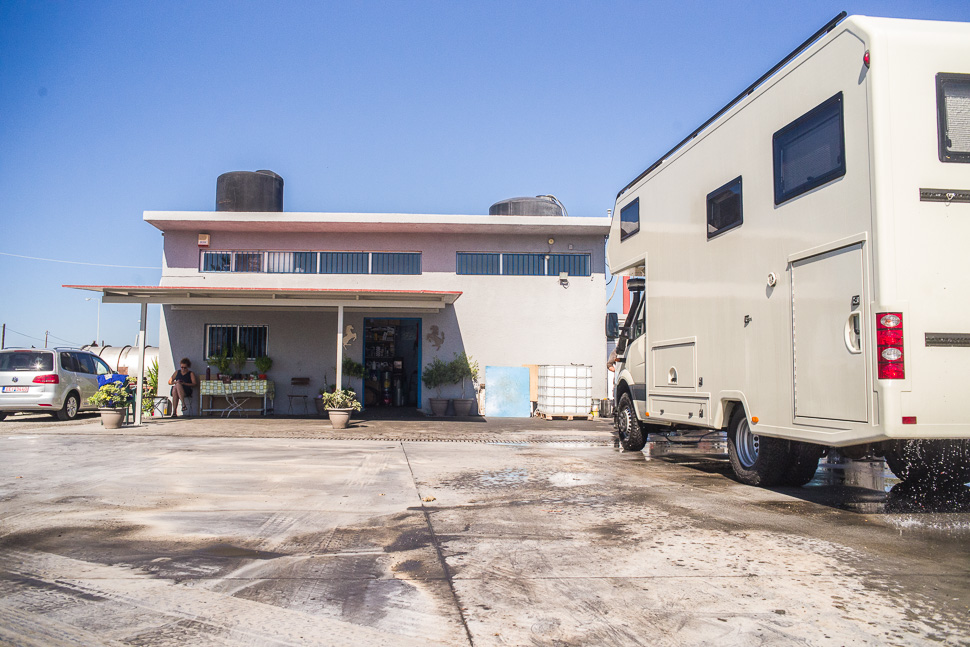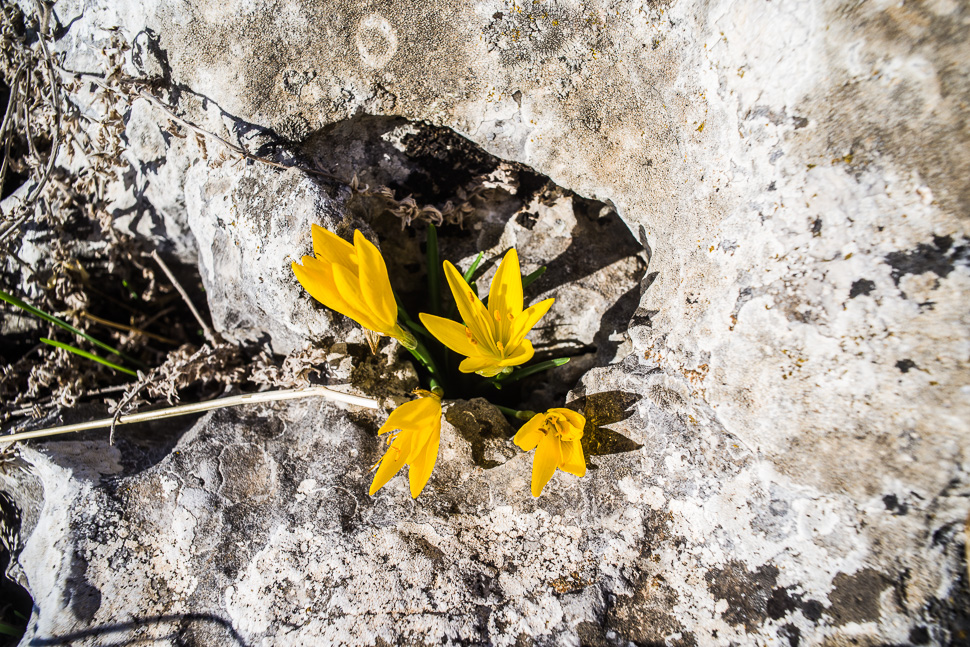We had to cross the Canal of Corinth to reach the Peloponnese, where we want to spend the next month.
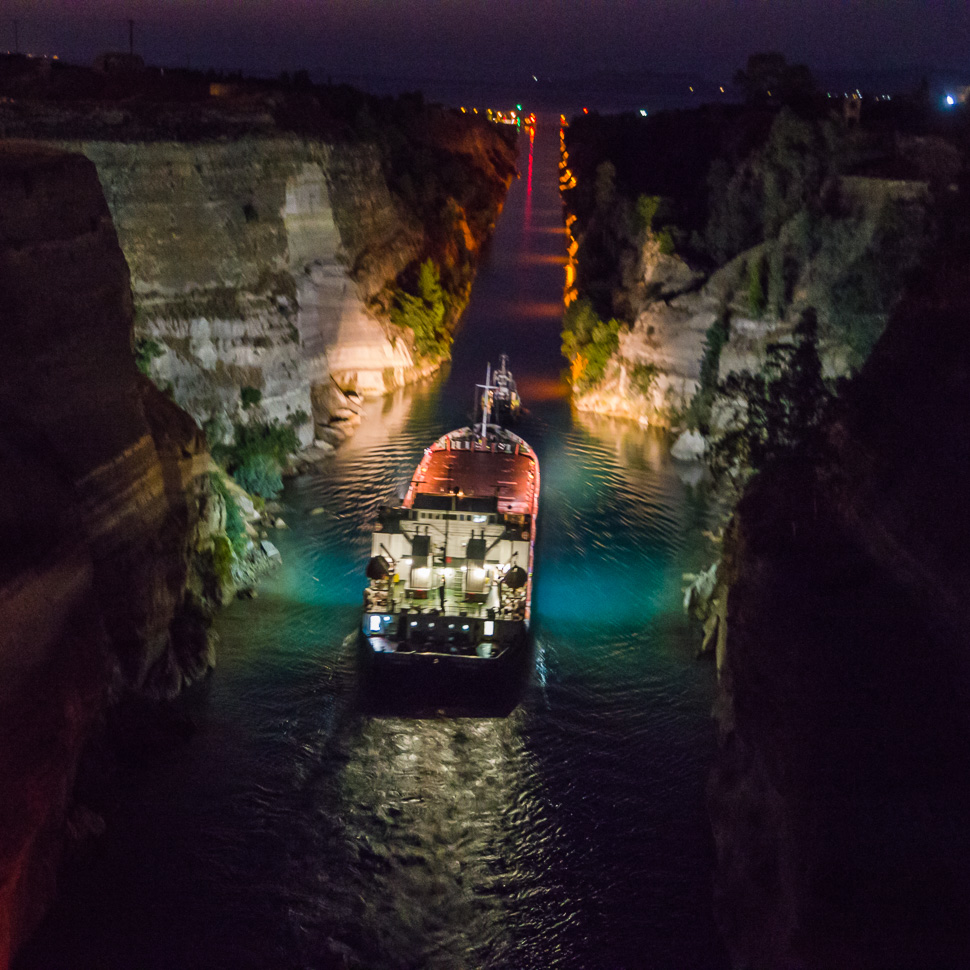 |
| Canal of Corinth at night |
We came up with 4 things we connect with Corinth:
– the canal of Corinth
– Corinthian columns
– the letters of Saint Paul to the Corinthians (New Testament)
– Corinthian raisins
We went to explore all four and more.
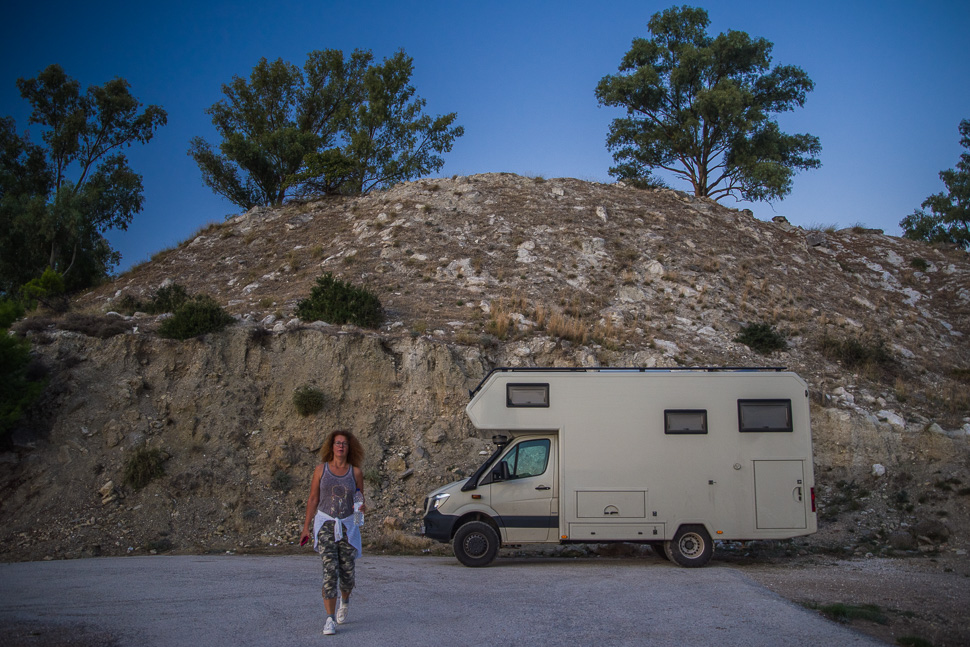 |
| Our parking for the night directly at the canal |
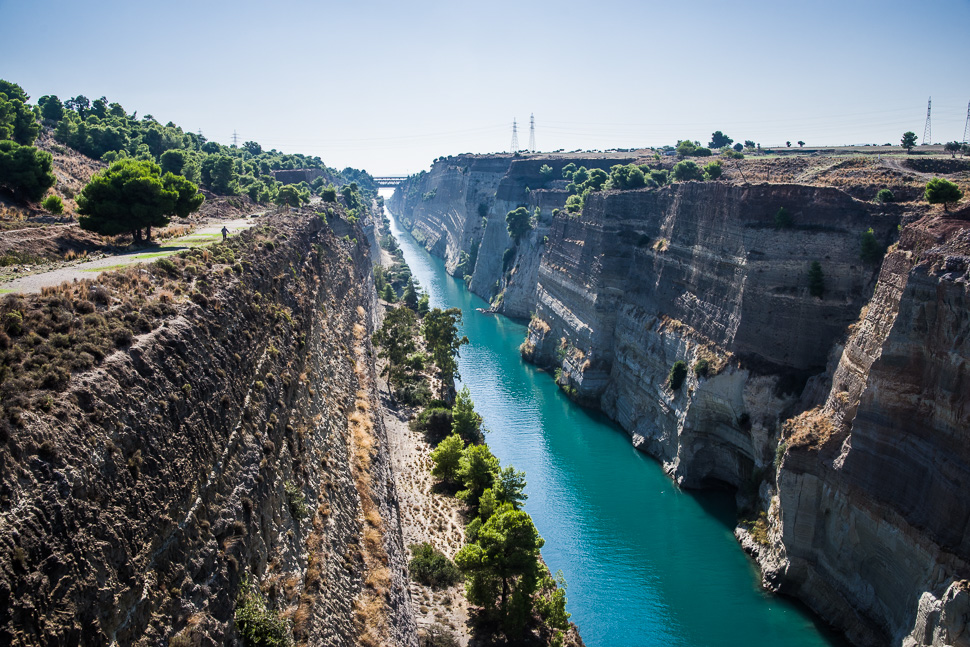 |
| Canal in the morning |
The canal cuts 6.4 km through the narrow Isthmus of Corinth and separates the Peloponnese from the mainland. It was dug at sea level and has no locks. With only 21.4 metres at its base, it is impassable for most modern ships.
The canal was already proposed in classical times, and a failed effort was made in the 1st century AD. Finally, construction started in 1881 and was completed in 1893. Due to the canal’s narrowness, navigational problems and landslides from its steep walls, it failed to attract sufficient traffic.
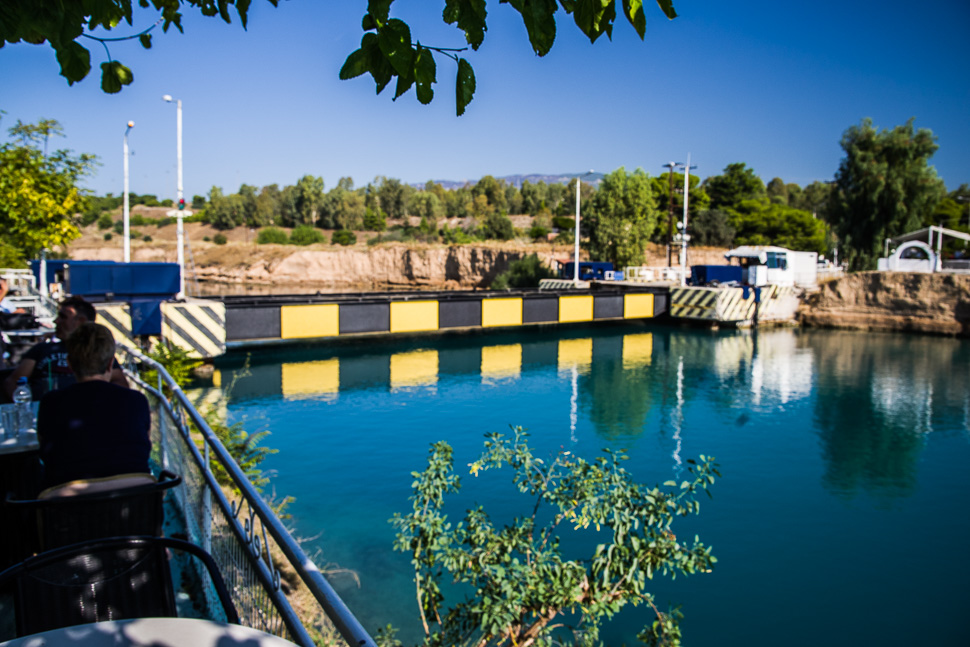 |
| Bridge at the end of the canal … |
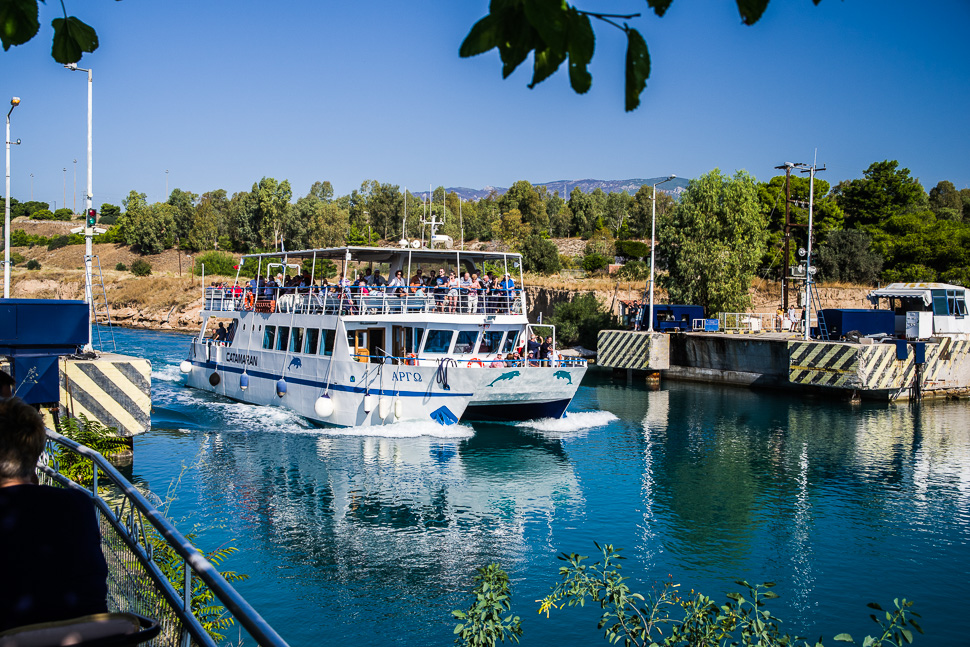 |
| … which disappears when boats are entering or leaving |
After walking to the western end of the canal, we had spent the night near the pedestrian bridge in the middle. (Position on park4night) The next morning we stopped at the bar at the eastern end to watch boats coming and going before we finally drove on to Ancient Corinth.
Pirene is the name of a fountain or spring in Greek mythology, located in Corinth. It was said to be a favoured watering-hole of Pegasus, sacred to the Muses. Poets would travel there to drink and receive inspiration.
 |
| 1. Letter of Saint Paul to the Corinthians |
About 50 AD, during his second missionary journey, Paul founded the church in Corinth. While staying in Ephesus he received disconcerting news of the community in Corinth regarding jealousies, rivalry, and immoral behaviour. His letters written to correct what he saw as erroneous views in the Corinthian church become part of the New Testament.
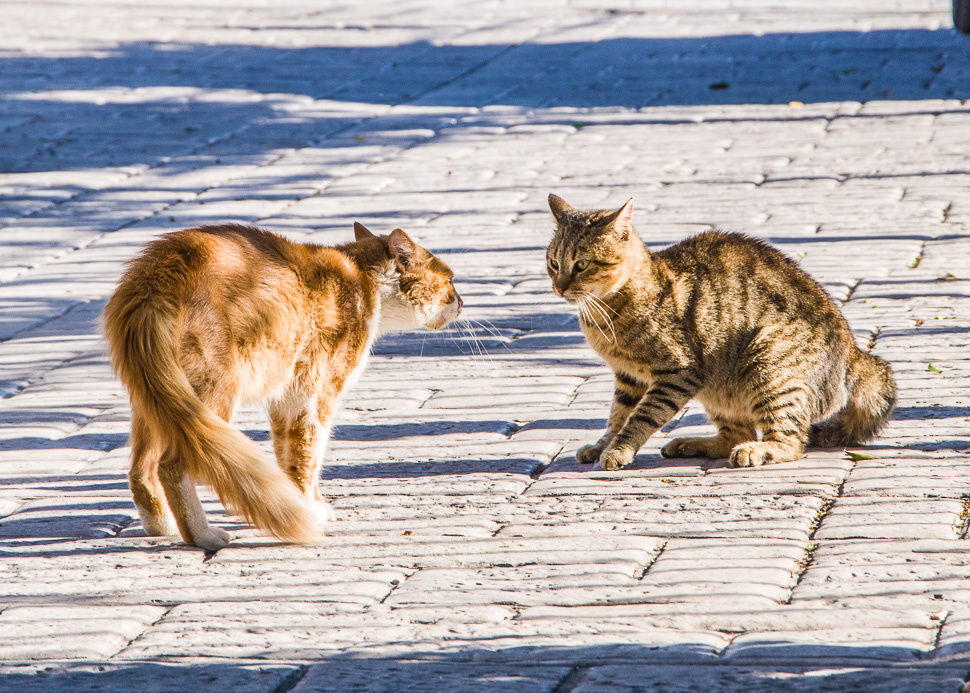 |
| Street fight! |
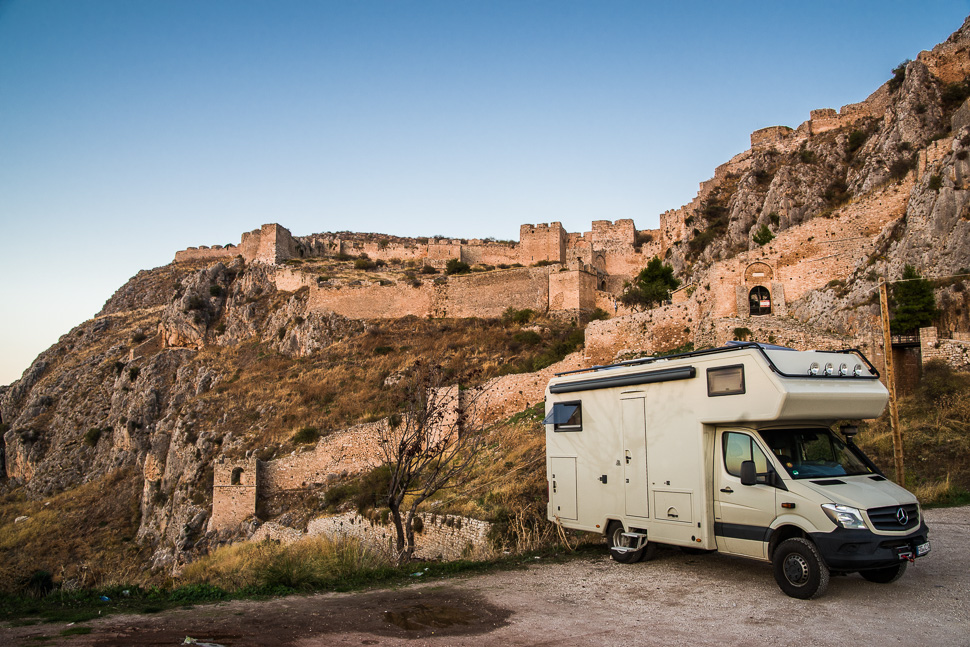 |
| Parking for the night |
Acrocorinth, the acropolis of ancient Corinth, is situated on a monolithic rock overseeing the ancient city of Corinth. 3000 metres long walls circle the hill. The side of the entrance was protected by a moat and 3 powerful fortification walls.
With its secure water supply, Acrocorinth’s fortress was repeatedly used as a last line of defence in southern Greece because it commanded the Isthmus of Corinth, repelling foes from entry by land into the Peloponnese peninsula.





